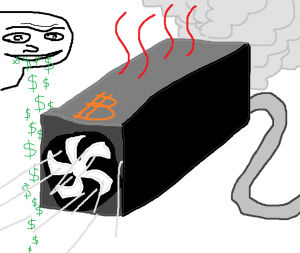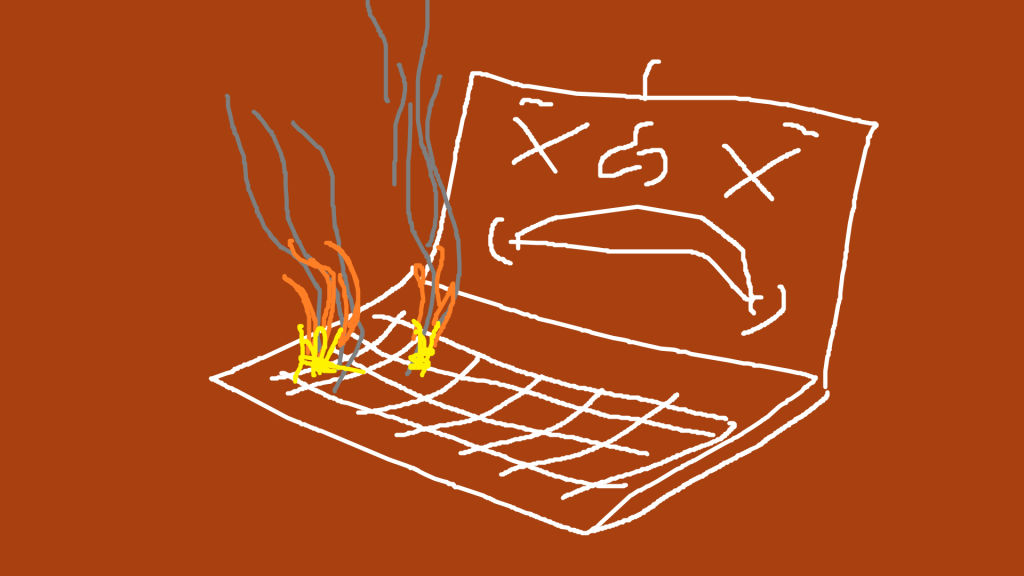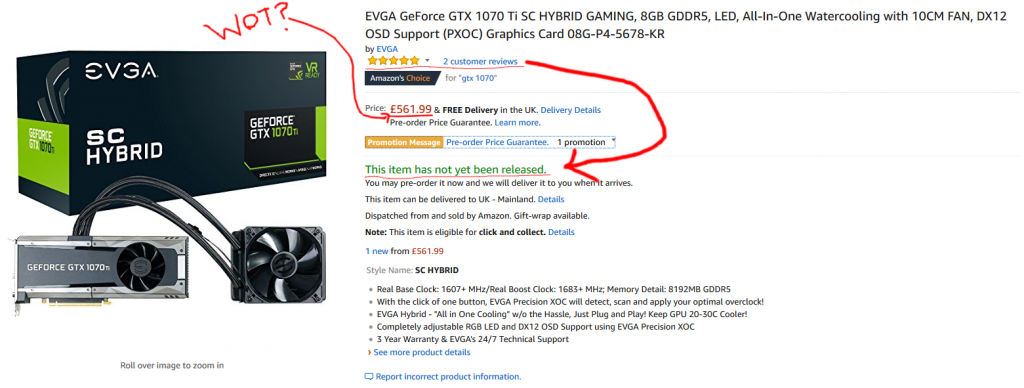insert_linkStop Under-Using Your PC Right This Very Moment!
What if I told you that you could be earning money by simply reading this sentence? Fortunately, this is achievable—you can easily benefit from cryptocurrency mining profitability if you know the ways.
To prove this is possible, I have made a buttery-sweet amount of cash through mining. In fact, I am currently earning whilst writing this post—just by having my computer switched on.
Hopefully, after reading my list of 5 simple strategies, you will stop wasting your time and generate an income. Even if you do not have the hardware to make mining worthwhile, you can still use these strategies to make wise investments in the future without regretting your purchase.
insert_linkFirst, Some Background Information
If you have not already done so, see my article on cryptocurrency, which serves as a spot-on starting point for anyone new to the subject.

insert_linkBut What Exactly is Cryptocurrency Mining?
Great question. You can refer to the Wikipedia articles on cryptocurrency and mining. Also watch this video, which is a comprehensive guide specifically talking about Bitcoin.
However, all you need to know is that you can use the processing power of your computer (or specialised mining hardware) to generate hashes that attempt to verify transactions. You will be paid to your wallet using funds that come from transaction fees. A wallet is almost like a bank account; you use it to store funds of a certain cryptocurrency.
Exchanges are services that allow you to trade your cryptocurrency for another, or for fiat money like the Great British Pound (£).
insert_linkIsn't Mining Software a Form of Malware?
No, at least not if you're careful. Miners are generally flagged by antivirus software because some malware, once on a computer, start using the victim's machine to mine for them. Obviously, you would want to avoid this since your computer performance will be substantially reduced yet you aren't paid for it.

Another thing to look out for is scams. Make sure if you sign up for a wallet, mining, or trading service, or download any sort of software, that the website is trusted, reputable and not too good to be true. Unfortunately, due to the nature of cryptocurrency, scams are something to be vigilant about.
If you are uncertain about a website, check badbitcoin.org for a list of illegitimate websites as well as other tips to keep safe from the bad man.
Everything I mention in this article I know to be legit, safe, and strong and stable, so do not worry about your antivirus asserting its dominance over you. That is unless you managed to click on a dodgy popup (none on this website, though).
insert_linkThe Potential Risks
Cryptocurrency mining is not risk-free. In all likelihood, the largest risk or obstacle you could face is the price of your cryptocurrency—it is constantly changing. The same amount of Bitcoin could be worth £200 one week and £300 the next, albeit that is a more extreme example.
To see how the price of Bitcoin has fluctuated in the past year alone (2017–2018), see this chart.
Furthermore, you would risk investing in hardware dedicated to mining, such as ASIC miners like the popular Bitmain Antminers. This is for the reason that they serve you no other purpose, hence you must pay off the unit before you profit from it. Additionally, if a fancy new miner is released, the difficulty increases, you earn less, and the resale value has decreased.
The methods that I will be showing you further on in this article will be reasonably risk-free and juicy.
insert_linkThis Sounds Amazing! Could it Replace My Job?
Unfortunately for you, my risk-reduced strategies will not make you rich. In fact, it is extremely difficult to make anything near the salary of even a poorly-paid job, especially when considering the investment of hardware and horrendously amplified risks.
In my opinion, the best way to mine is as a hobby, to generate a small amount of side-income that you can use to invest with, buy products with (in cryptocurrency or fiat money), or perhaps donate to charity. Mining profitability is sadly not great enough for us commoners.
So, without further ado, let us dive into the sub-dimensional realm of sweet, sweet profit!
insert_linkInvest in The Right Hardware Like Butter
insert_linkStrategy 1

In order to minimise risk, whilst ensuring income, you must be careful when it comes to your choice of hardware. You might also have the hardware to mine, but I'll talk about that later.
Mining hardware consists of processors that have the ability to mine a cryptocurrency. For the sake of this article, I will divide these products into two groups: dedicated and multi-purpose.
insert_linkDedicated Hardware
Dedicated mining hardware includes ASIC miners that are designed to solely mine for a single, or multiple cryptocurrencies. As a consequence, you are not able to use them for anything else if your mining business goes bust, and, to add to the pain, fewer people will be willing to buy dedicated mining hardware at a profitable price if a faster miner is released—should you wish to sell it.
Another form of dedicated mining hardware is a specialised GPU with no display outputs. We can expect to see more of these in the future, and hopefully, it will help the current issue of inflated prices of consumer GPUs.
insert_linkMulti-Purpose Hardware
On the other hand, multi-purpose mining hardware covers devices that are not designed to mine cryptocurrency but have that ability. For example, you could use your CPU or graphics card. GPUs produce a higher hash rate that CPUs, explaining why nowadays GPUs are overpriced and only occasionally in stock: miners buy them in bulk.
However, if you read on, I will show you exactly how spending extra now can pay off.
What is simply great about this typical computer hardware is that you don't need to worry about when you will pay your components off; this assumes you will use the hardware like a computer. You shouldn't buy a GPU to mine; buy it to increase the graphical performance of your computer.
The primary return-on-investment of computer hardware is to improve your computer's performance. Money from mining is a bonus. This way, you reduce the risks of mining since you can always just ditch your mining business, still benefitting from the hardware.
Later on, I will discuss another significant reason for using multi-purpose hardware.
When selecting your hardware, search around for mining profitability for different CPUs and GPUs. You could use this tool.
insert_linkIt's Like Money and Butter

Would you rather invest in money or butter? You see, I would purchase seventy cubic metres of butter over money. But why, you ask?
Say the currency crashed, and my money is now worth 2% of what it was previously. Conversely, had the interest in the butter market decreased, I would still find value in my investment—now I have butter for life.
insert_linkSo, You Already Have Hardware?
If you already have a computer, how do you know if you can mine profitably with your hardware?
If you use a desktop computer with a decent GPU and/or decent CPU, you probably should be mining right now. I am. Strategy 3 will show you how and when you will be able to mine for it to be profitable, so don't worry about electricity costs just yet.
Laptops (excluding those insanely expensive liquid cooled ones) are less suitable for mining due to the lack of cooling. As a result, the heat from generating hashes can reduce the lifespan of the device. In addition, you cannot as easily sell or replace the CPU or GPU.
Ideally, you want to build or buy a custom-built computer. This way, you buy and sell GPUs individually.
insert_linkUse Your CPU
Although it may not be as significant as GPU profits, CPU profits make a difference. Using the software outlined in Strategy 2 of this article, you will be able to take advantage of your CPU’s unused resources.
Chiefly if you do not own a GPU—perhaps because of the inflated prices—this is a valuable tip for you. All will be good, so long as you maintain a decently-cooled CPU, preventing overheating, thus much decrease in the component’s lifespan.
insert_linkDo not ignore:
The operating system of your computer matters. Don’t mine on a Mac, due to inadequate cooling, inadequate components, and an overall lack of support by the mining community. This leaves us with Windows and Linux.
Linux can perform better than Windows—marginally. In spite of this, I wouldn’t recommend mining on Linux because of Strategy 2:
insert_linkUse NiceHash Like Butter
insert_linkStrategy 2
Okay, now that we’ve sorted out hardware, what are we going to do with it? Once again, there are multiple approaches.
Predictably, the “hardcore” miners will go full-out with an 8 GPU setup—I don’t recommend that. This is for the same reasons I will never invest in dedicated hardware miners; to clarify, a computer optimised specifically for mining is, in my eyes, dedicated mining hardware.
As you know, we will be using Bob’s high-spec computer that he uses for gaming and 3D animation. For that reason, we shall be downloading mining software enabling us to use Bob’s computer to mine cryptocurrency.
There are many different options in this case, primarily because of the vast range of cryptocurrencies. However, the best strategy is to not choose between cryptocurrencies, since you introduce more risk relying on a single cryptocurrency and mining profitability can greatly fluctuate.
Additionally, you will be faced with a multitude of different mining software. Acknowledge that some perform better than others.
Grateful for the fact that Bob reads my blog, he is sure about exactly what to do.
insert_linkEnsure Utmost Mining Profitability

(While NiceHash is listed on badbitcoin.org, the reason is difficult to verify, especially with my experience. They are reimbursing old balances, so it wasn't their intention to get hacked in December, which is what seems to be referred to in the reason, posted soon after. Reputable sources have reported about it on "the incident": TechCrunch, The Guardian.)
In my opinion, the approach—with the best mining profitability—is using NiceHash. I am currently using NiceHash because it offers more profit (that’s reliable) than other methods.
In short, they allow you to mine the current most profitable cryptocurrency based your system and the current circumstances. Say, for example, one cryptocurrency crashes and loses popularity, you are protected by the fact that you can mine others without losing any earnings. This is done automatically.
insert_linkNiceHash
NiceHash offers two Windows downloads, making life easy: there is a simple, easy to use version whereas there also exists an advanced version, which I use as it can potentially deliver more sizable profits.
Once you’ve installed it, you must run a benchmark on your hardware. This allows the software to assess how profitable your hardware is for the different algorithms. Algorithms are selected automatically in accordance with this information for maximum mining profitability.
Rather conveniently, you can see the profitability of your hardware in your own currency.
Finally, you are paid in Bitcoin once your owed balance reaches a certain threshold. More information about fees at this page and payouts here. You might find that the best option is to go with a NiceHash wallet (attained when signing up at NiceHash) because of small pay-out fees, the low payout threshold, and instant, feeless transactions from your NiceHash wallet to your Coinbase account.
insert_link[Edit] Illegitimate Services
Here is one point where one can easily make misjudgements. Even though a service might appear to be completely legit, there may be more behind it.
This is especially so, seeing that anti-malware software blocks most mining software anyway. As a result, it is difficult to distinguish between what you want on your computer and what you really don't.
In conclusion, never trust a service even if it doesn't seem suspicious at all. Rather, only trust it if you see multiple reliable, reputable services fully trust it and it isn't on badbitcoin.org. After all, badbitcoin.org is always receiving new entries for unsafe websites.
insert_linkLinux?

No. For both of the above options, you cannot download a version of the software for Linux, unfortunately. Nevertheless, there is a workaround for this, albeit with compromises.
As I do not intend to go in depth with this, I will give you a concise overview of this: download mining software for your most profitable algorithm, and get it mining for the NiceHash servers. Have a look at this page for more guidance.
Obviously, as you could have guessed, the drawbacks of this is that algorithms are not automatically selected, though you could manually switch them. You also miss out on an intuitive interface with easy-to-access settings.
insert_linkMine Whenever You Can Like Butter
insert_linkStrategy 3
It’s not merely the software and hardware choice that defines successful mining profitability; your strategy when it comes down to when to mine has an equally significant role. I assume you are a mining hobbyist using your computer.
To begin with, calculate how much power your computer uses when mining. Keep in mind this is not necessarily the power rating of each component, since they may not use as much power as they can draw. However, if configuration untouched, your GPU and CPU is likely to use the number it states on the box—that is, when mining.
For example, say your computer demands 400W altogether. Also, assume electricity costs 15p per kilowatt per hour. Use an electricity calculator tool like this one to find the expense of mining continuously for 24 hours: £1.44 in this case.
Next, find the daily mining revenue you will make. NiceHash shows this by default. Your system is profitable if your revenue is greater than your expenses, but there is still hope if your computer takes more than it gives.
insert_linkFor Non-Profit Computers
This is inarguably tricky. The only times it will make sense to mine is when you are using your computer (or when it would typically be on). I suggest finding how much power your computer uses when you use it when not mining.

Afterwards, calculate the profit your CPU and GPU (individually) can bring, along with the total system power usage. Find out how much more it costs to mine with each your CPU and GPU. If any of those two expenses are lower than the profits, you can still mine.
To illustrate, the additional expense of mining with the GPU might be higher than the profits. Although, the CPU earns more than the expense of additional power it demands. In this case, we can use the CPU.
With the semi-profitable hardware, mine whenever you use your computer for light resource-consuming tasks such as web browsing. In other words, mine when you can handle the impact on the system. In cases such as Bob’s gaming or animation, don’t mine cryptocurrency.
insert_linkFor For-Profit Computers
Mine whenever you can. If you can leave your computer on 24/7, do it.
Like described above, I heavily suggest you mine whenever you can tolerate the performance impact; trust me, it will be worth it.
How can you easily profit without sacrificing your computing experience, though? With NiceHash, you can only mine when your computer is idle. This way, you can just forget that the miners even exist, especially since they can automatically start mining when you log-in.
insert_linkSell Your GPU Like Butter
insert_linkStrategy 4
For some, a GPU is an expensive investment. To help ease the pain, you can employ this comprehensive strategy. In fact, it is so simple that I can describe it in one sentence:
Sell your GPU after having made some considerable profit then buy a new one with the earnings.
Admittedly, you might not make a profit even when accounting for mining profits. Nonetheless, it doesn’t matter: mining shouldn’t have been the only thing you used your GPU for.
Normally, you would have used a GPU for whatever else you would use it for. The only difference is that, in this case, you have also made money as a bonus, allowing you to buy a new GPU sooner, cheaper, or that is of a higher tier than if you had not been mining.
Mining now = buying discounted GPUs in the future.
Of course, it is great if you can make a profit with this strategy. In addition, this could also apply to CPUs, though they might be slightly more difficult to sell due to chipset requirements.
Look at everybody else on eBay who knows about this strategy! You're missing out!
insert_linkOverclocking and Adjusting Power Like Butter
insert_linkStrategy 5
If you want to boost mining profitability, you can try experimenting with GPU and/or CPU overclocking. This entails finding a suitable overclock that does not compromise the stability of your system. Also, keep in mind that overclocking may slightly reduce your card's lifespan as well as produce excess heat, leading to faster fan speeds and more noise.

At the same time, consider what it means to have your component's lifespan reduced—will you sell it and upgrade in the future, long before reaching the end of the component's life? Personally, I would recommend using the highest overclock configuration possible and sell the component when you can upgrade. Therefore, you aren't affected by the effects of overclocking—but make sure to keep the hardware as cool as a penguin.
You probably will not seriously affect your CPU or GPU if you don't increase the voltage—something I don’t do myself, though feel free to do so. Increasing power increases head produced, so be sure you have adequate cooling before risking your biscuit.
insert_linkAdjusting Power
That leads us smoothly to power settings. Tools like EVGA Precision X or MSI Afterburner can easily allow you to not only overclock but adjust the power limit and voltage of your GPU. With more power, the GPU can more easily achieve a higher core clock and memory clock.
You need to find the ideal power setting that allows the highest profitability. Do not be mistaken, I do not necessarily mean the highest hash rate.

In order to identify the sweet spot, first, calculate how much power the CPU/GPU demands. This will be power usage (%) multiplied by the maximum power rating. E.g. 80% (0.8) × 180W = 144W. Subsequently, take note of the hash rate.
Repeat this for numerous power settings; this could be below (only recommended for GPUs) or above 100% of the default power usage.
Having done that, you are now able to compare the most profitable configurations. Mining profitability can be measured by how many hashes are calculated for the amount of power used. Therefore, divide the hash rate of each result by power usage in watts.
insert_linkExample
At 100% power: 456H/s ÷ 180W = 2.53H/s/W
At 80% power: 409H/s ÷ 144W = 2.84H/s/W
Conclusion: 80% power is more profitable than 100% power. In this case, consider investigating power settings around 80% such as 90% and 70 %, but be aware that a too low power setting could make your computer unstable and liable to crash.
insert_linkOverclocking
Overclocking is, uncoincidentally a similar story to power adjustment: both increases the clock rates of the component. More power allows for more work to be done, whereas when overclocking, you increase the clock rate for the amount of power given.
As a result, this can easily lead to instability and crashing of your computer. At the same time, though, better results.
On a CPU, all you can adjust is the clock rate—and you want that as high as you can get it. Conversely, a GPU has a core clock rate and the memory clock rate. Consequently, things get a little confusing regarding these two variables.
For example, I’ve found people thinking you should increase both clock rates in proportion to each other, whereas others go all-in on one clock rate, leaving the other alone.
Alas, there is no golden rule to GPU overclocking—different algorithms prefer different configurations. When you come to configuring the overclock, try different settings, and observe the performance of your miner. Remember: your mileage will vary when it comes to overclocking your components, due to the silicon lottery, more info here.
Go for the highest hash rate without compromising stability. Take my word for it, it is frustrating having your system randomly crash—I would know.
For my GPU, I overclock both the core clock and memory clock, leaving the power usage at 100% and voltage untouched. That seems to give me good profitability, a stable system and does not overheat my card.
In addition to that, I modified my fan curve (increasing fan speed) to keep my GPU nice and icy.
insert_linkCan Mining Fix Overpriced GPUs for Gamers?

Having said all of that, I think mining can be an appropriate solution to the GPU crisis currently. Yes, we still have the issue of little stock, but you will be able to find a GPU somewhere, regardless of whether or not it is ideal. Hopefully, with a decent card, the money you make will more than pay off the surplus expense.
Check out PCPartPicker for a list of GPUs, of which you can filter and sort by price.
Of course, you’re out of luck if you can’t afford the initial investment of an overpriced GPU. That is the only flaw in my argument (that mining profitability can fix everything including global warming and famine).
insert_linkWhere to Go from Here
Again, if you have not already done so, see my article on cryptocurrency. There, you can learn how to use cryptocurrencies like Bitcoin with sufficient knowledge to be able to say you know what you are doing. It goes without saying: you should not be mining if you do not know how to handle its product.
Get a Coinbase account, so you can store and easily withdraw your funds. When you sign up for Coinbase using that link, you get $10 (£7) of free Bitcoin when you buy or sell $100 (£71) or more worth of cryptocurrency.
Also, why not sign up for email updates of new posts at this link?
PS: The secret code is “no.”


